Doping at the Games: Why the Olympics Banned These Drugs
Doping drugs

For Olympic athletes looking to boost their athletic prowess, the wide world of doping drugs provides ample opportunities.
Very competitive athletes are vulnerable to the idea that drugs may help them gain a "secret edge," said Tom Hildebrandt, a psychologist and the director of the Appearance and Performance Enhancing Drug Program at the Mount Sinai Health System in New York City.
There's also a belief that "everyone's doing it," whether they are or aren't, Hildebrandt said. This makes doping seem normal, he added. [The 'Doping Arms Race': How Athletes Evade Testing]
Indeed, doping violations have been found in every sporting class in the Olympics, said Rhonda Orr, a senior lecturer in exercise and sport science at the University of Sydney in Australia. (A sporting "class" is a broad category that includes several disciplines. For example, the cycling class includes road cycling, track cycling, mountain biking and BMX.)
The World Anti-Doping Agency (WADA) maintains an extensive list of substances and methods that might increase performance and that are banned during competitions, and in some cases, banned for use even when athletes aren't competing.
WADA rules apply not only during the Olympics, but also other high-stakes competitions such as the FIFA World Cup, the Tour de France, and international tennis competitions.
Here is a look at what's been banned from the Olympics, and how these substances and methods are thought to work in the body to give athletes an edge.
Anabolic agents

The big ones in this group are the androgenic steroids; these are the drugs that come to mind when you think of steroids.
Androgenic steroids work by binding to the body's androgen receptor. There are two naturally occurring compounds in the body that normally do this: testosterone and dihydrotestosterone. These compounds are made in the body from cholesterol, which is converted into the hormones through a series of steps. But when making the compounds in the lab, chemists can construct other chemicals that resemble either testosterone and dihydrotestosterone, by similarly binding to the androgen receptor.
The androgen receptor is found throughout the body, but it plays a primary role in how muscles make protein, Hildebrandt said. When a compound successfully binds to the receptor, it signals to the body to make more muscle.
But building up muscle isn't the only effect of taking androgenic steroids; they also have a more immediate effect, Hildebrandt told Live Science. The steroids can increase the amount of heat-shock proteins in muscle, he said. These proteins help protect the muscle cells during very intense exercise, such as weightlifting or sprinting, Hildebrandt said.
Growth factors and peptide hormones
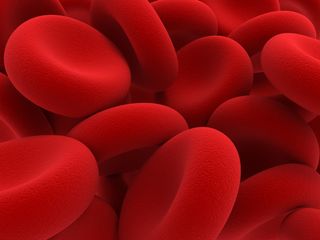
Growth factors, such as growth hormone, are substances that primarily act on muscle and bone to, as the name implies, promote growth. More technically speaking, these substances promote cells to replicate, Hildebrandt said. The end result is bigger muscles.
Another compound that falls into this category is erythropoietin, also known as EPO and compounds that act in the same way. But instead of stimulating muscle growth, EPO tells the body to make more red blood cells, according to the World Anti-Doping Agency. More red blood cells mean the blood can carry more oxygen to muscles, which enhances performance. Using EPO is sometimes called "blood doping."
This group of drugs may present the biggest challenge to Olympic officials, Orr told Live Science.
The trouble is that these drugs include naturally occurring hormones, which "present more complexities for detection than drugs from the other classes" do, Orr told Live Science.
Indeed, a blood test for growth hormone "has been a long time coming," Hildebrandt said, but researchers have finally come up with one, he added.
For some other substances, such as insulin-like growth factor-1, no test has been sanctioned yet, Orr said.
Beta-2 agonists

Beta-2 agonists are typically found in asthma inhalers, where they act to help relax the muscles of the bronchial tubes (which connect the windpipe to the lungs) when a person is having an asthma attack. For athletes who have asthma, the WADA does permit the use of inhalers.
But when certain beta-2 agonists are taken orally, rather than inhaled, the drugs can have a different effect: These drugs enhance an athlete's performance by preventing muscle from breaking down, Hildebrandt said.
The benefits of preventing muscle breakdown are twofold: First, preventing breakdown makes it easier for athletes to build up their muscles, Hildebrandt said. Second, blocking muscle breakdown can help athletes with endurance, he said. And with greater endurance, athletes can avoid muscle fatigue, he said.
Hormones and metabolic modulators

This is another category of drugs that act on an athlete's muscles, Hildebrant said. Similar to beta-2 agonists, the primary effect of these substances is to prevent muscles from breaking down, he said.
One way to prevent muscle breakdown is to lower the amounts of hormones in the body that normally do just that. The stress hormone, cortisol, is the body's natural primary player in this breakdown.
The substances in this category may, for example, lower the amounts of cortisol in the blood, Hildebrandt said. This can give athletes an edge in the final push of an event, he said. For example, if cortisol levels are lower, a sprinter wouldn't feel as much of a burn in his or her muscles in the last segment of the race, he said. This way, the sprinter doesn't have to fight as hard to get the same output, he added. [5 Experts Answer: Is Hormone Replacement Therapy Safe?]
Diuretics and masking agents
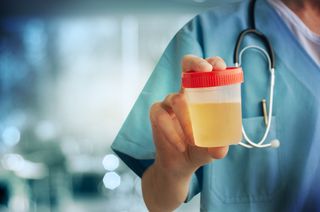
Diuretics, which make a person produce more urine, can help athletes shed unwanted water weight before a competition. But athletes also sometimes use these compounds to help flush other drugs from the body, so that these compounds don't show up in urine tests, Hildebrandt said.
In this way, diuretics act as what's called a "masking agent," a substance that's used to cover up, or mask, the presence of other doping drugs in a lab test, he said.
The WADA also bans other substances that act as masking agents.
Stimulants

Stimulants can give athletes a "psychological edge," Hildebrandt said. These are drugs that increase a person's energy, attention and focus, he said. For a tennis player in a 5-hour match in which each stroke matters, for example, stimulants could provide a boost, he said.
Narcotics & cannabinoids
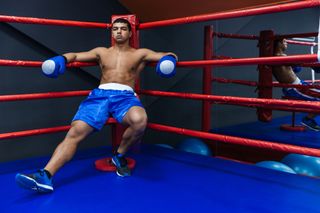
Narcotics, which are drugs such as opioids, and cannabinoids, which include marijuana and marijuana-like substances, may seem like odd choices for people whose aim is to enhance athletic prowess. However, the substances in this category are banned because of their pain-blocking abilities.
Athletes taking these drugs can compete through pain that would force other people to give out, Hildebrandt said. For types of sports where the amount of pain an athlete has to endure matters (think boxing or wrestling), blocking pain could give a person an advantage, he said.
Glucocorticoids

Glucocorticoids are forms of stress hormones and are related to cortisol, Hildebrandt said. They play a role in what's called "general arousal" in the body, he said. Think of the fight-or-flight response: A person's heart rate and blood pressure go up, and he or she feels "amped up," Hildebrandt said. For athletes, this means they become more primed to act and can respond to things quickly, he said.
Nonapproved substances
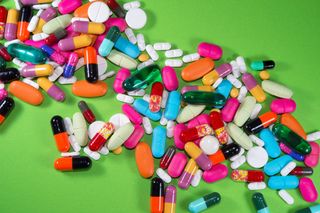
The name "nonapproved substances" may appear redundant, as none of the substances banned by WADA are approved for use by athletes. The nonapproved substances category, however, represents a broader class of substances: those which are not approved for any reason for human use, Orr said.
These include drugs that are still in clinical trials, discontinued drugs, designer drugs and even veterinary drugs, Orr said.
The substances that athletes are willing to use in order to gain an edge are expanding, presenting a challenge to Olympic officials as they attempt to keep up with testing, Orr said.
Banned Methods
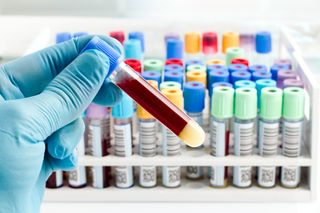
In addition to banning drugs, WADA also bans several performance-enhancing techniques, the most familiar of which is blood doping. Injecting drugs like EPO is one way to ramp up your body's supply of red blood cells, but another way is to simply remove some amount of your own blood (as is done during blood donation), and then later inject it back into your body.
Athletes sometimes train at a high elevations, where the lower levels of oxygen trigger the body to produce more red blood cells. Such training isn't banned, but sometimes athletes then store some of their blood that has extra red blood cells, and re-inject it before a competition, Hildebrandt said. This practice is banned, because it gives these athletes extra red blood cells to carry more oxygen to their muscles,.
Blood doping has been around for a long time, and labs do have a way of testing for it, Hildebrandt said. Basically, they look for a higher-than-usual amount of red blood cells in a blood sample, he said.
WADA also lists "gene doping" as a banned method for athletes. In theory, gene doping would involve modifying the genetic pieces of muscles to give athletes an advantage; however, this technique isn't ready for use just yet, Hildebrandt said.
Originally published on Live Science.
Sign up for the Live Science daily newsletter now
Get the world’s most fascinating discoveries delivered straight to your inbox.

